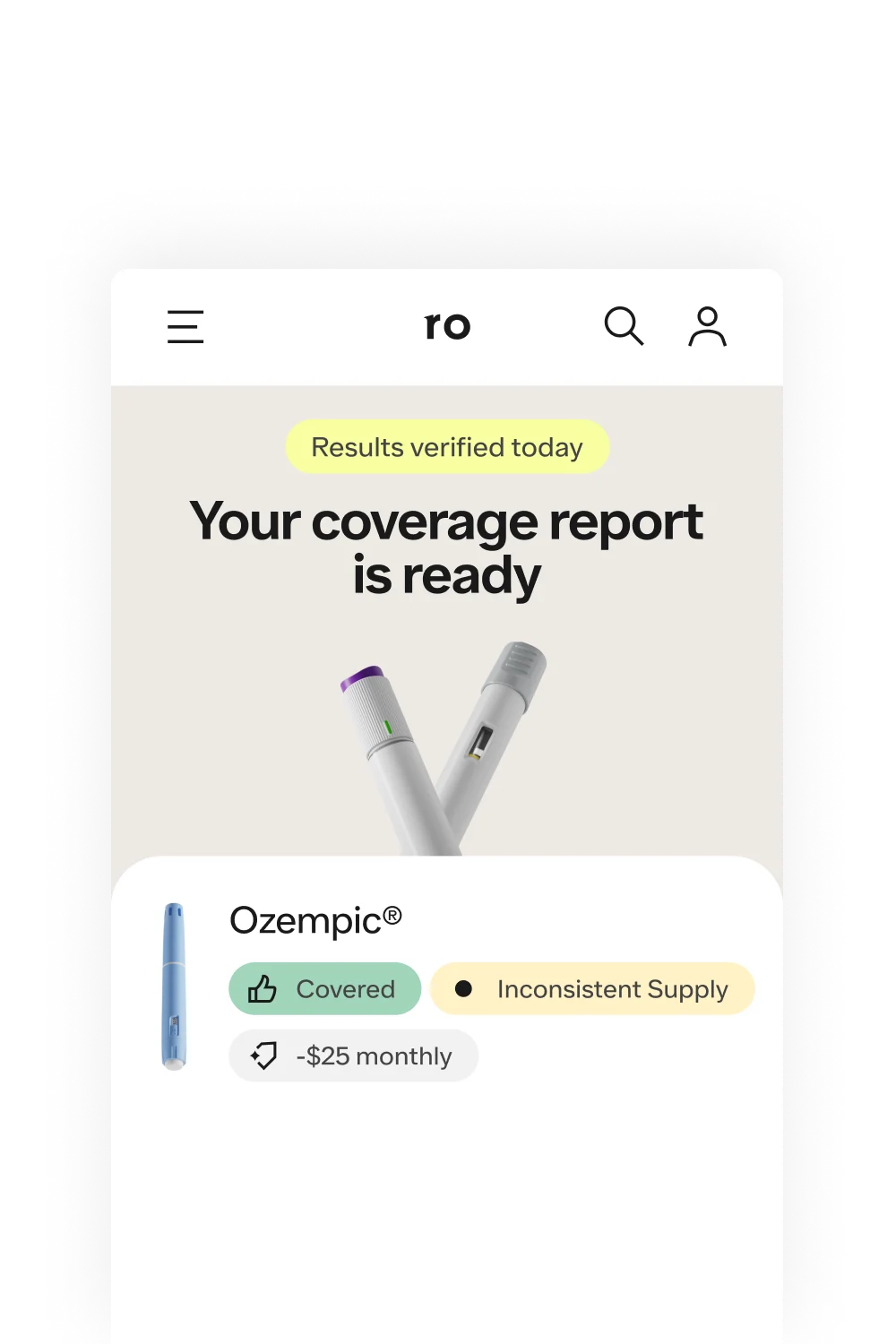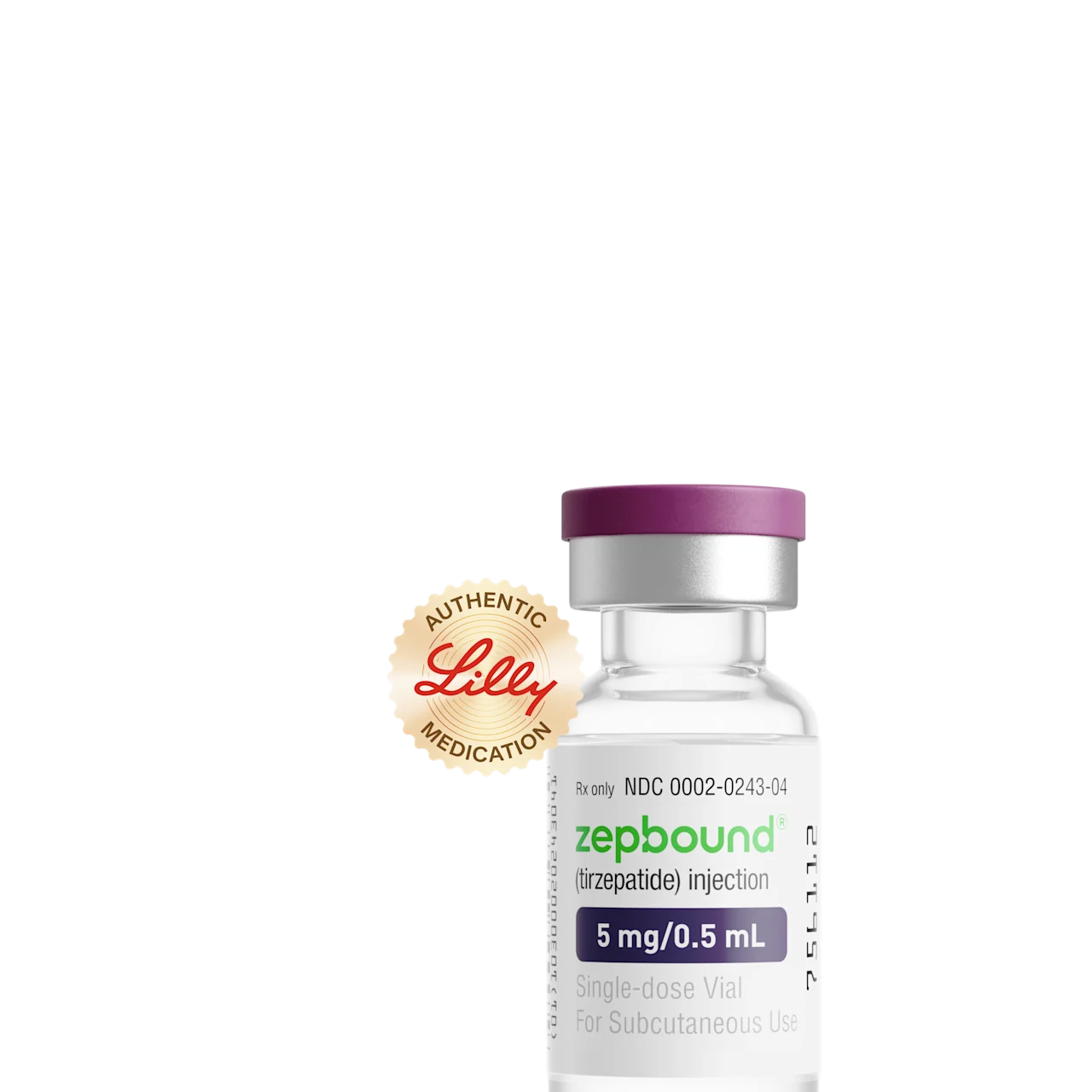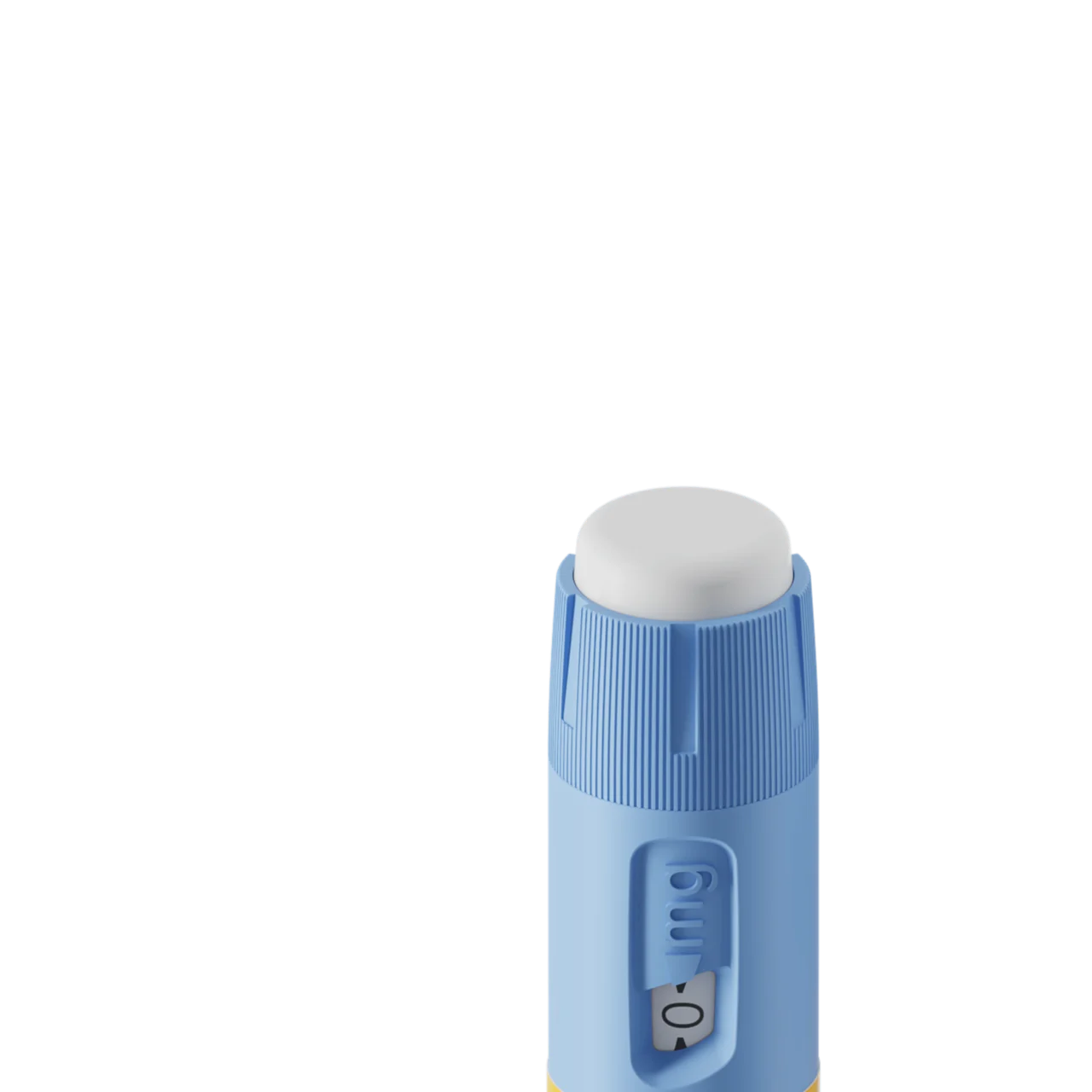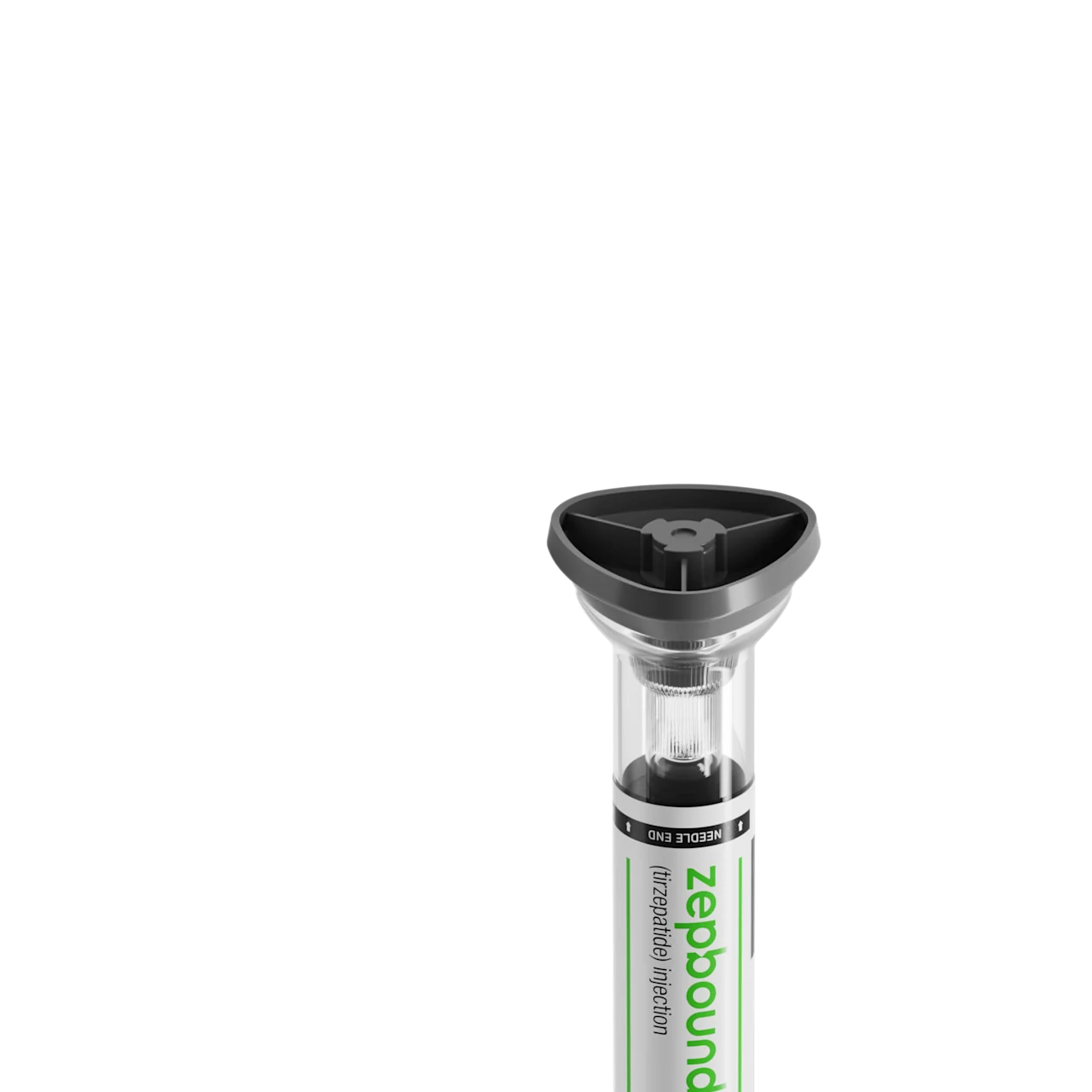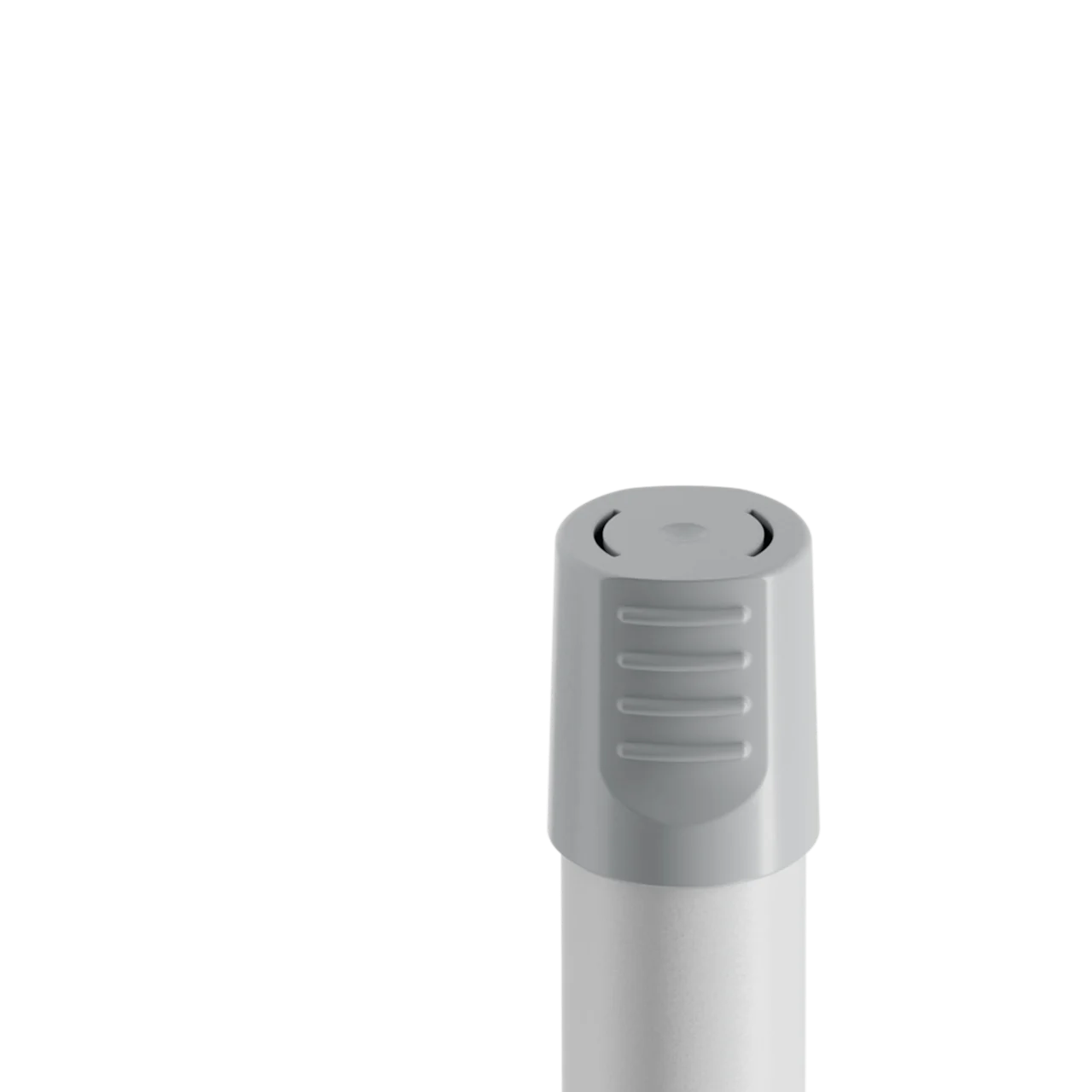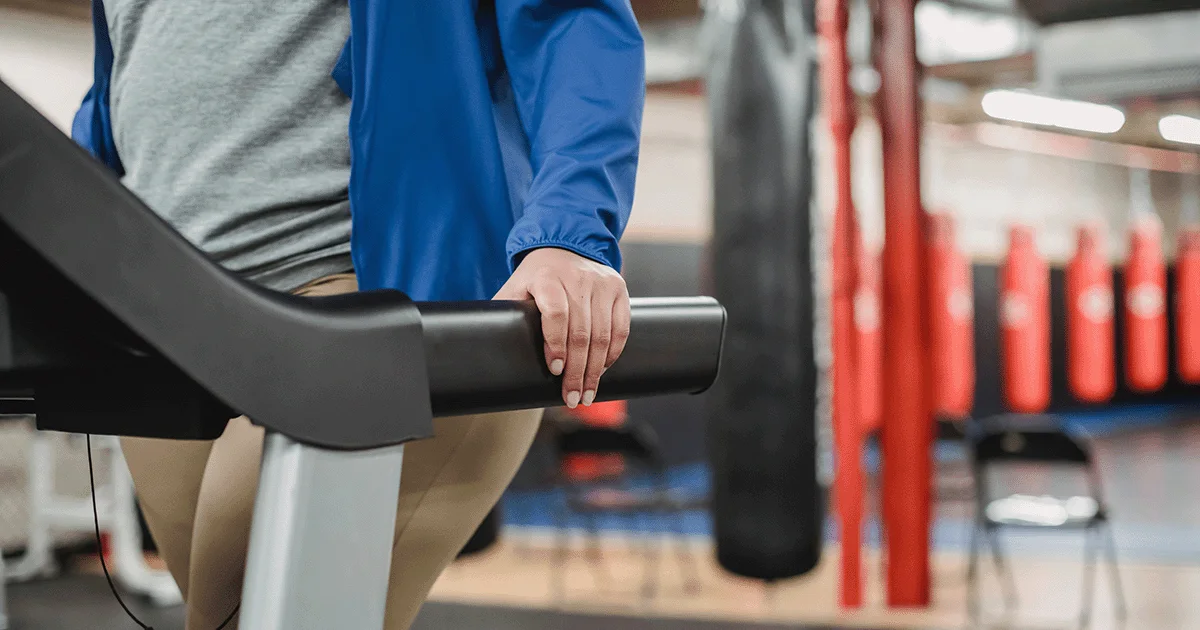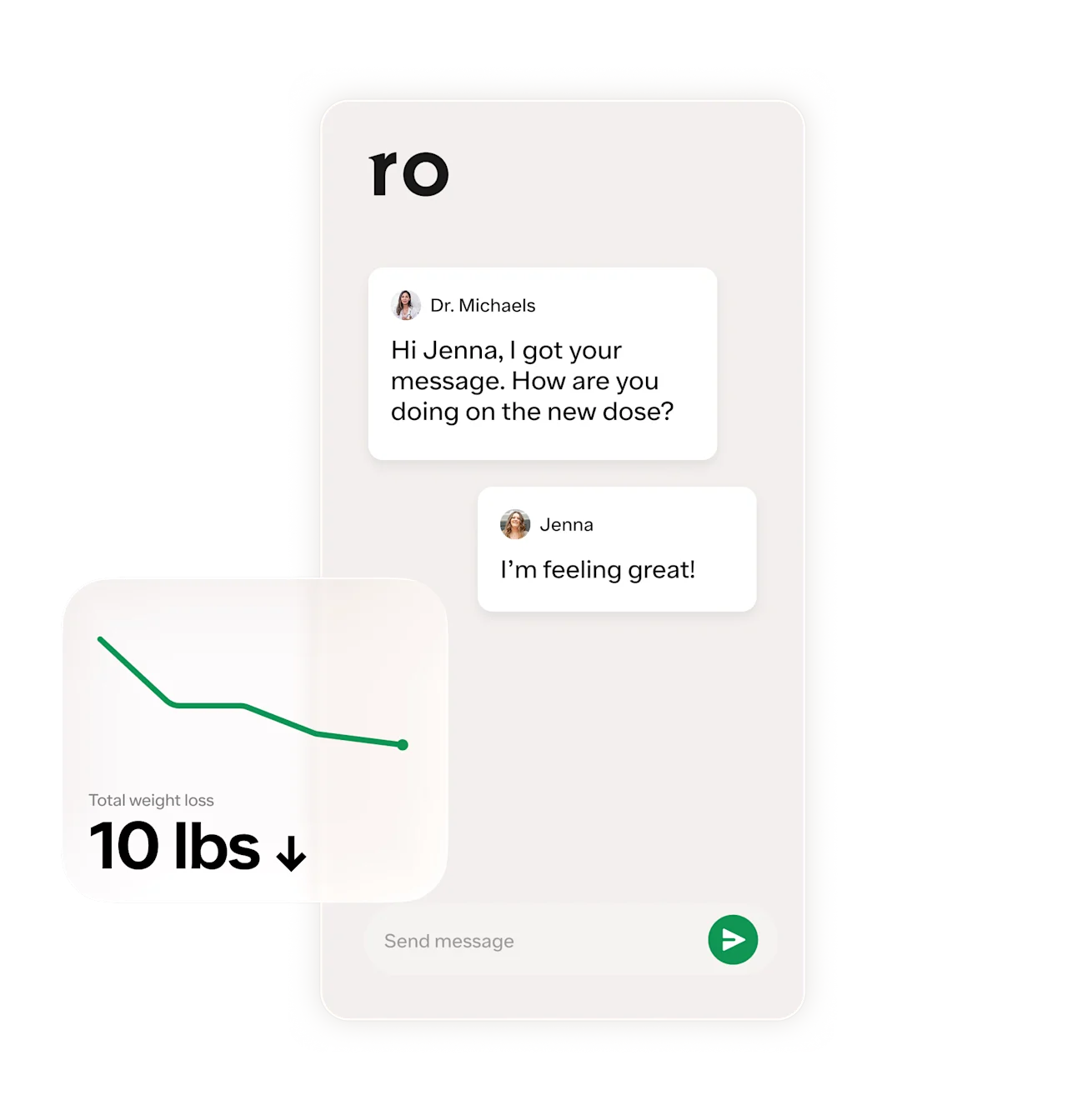Key takeaways
The best strategies for losing body fat include adding more protein and fiber to your diet, managing stress, and getting regular exercise.
Workouts that build muscle—such as lifting weights and high-intensity interval training—may help you burn more fat than cardio alone.
Extreme dieting, fat-burning supplements, and overtraining aren’t effective for healthy, sustainable fat loss—and may have negative health impacts.
Here's what we'll cover
Here's what we'll cover
Here's what we'll cover
Key takeaways
The best strategies for losing body fat include adding more protein and fiber to your diet, managing stress, and getting regular exercise.
Workouts that build muscle—such as lifting weights and high-intensity interval training—may help you burn more fat than cardio alone.
Extreme dieting, fat-burning supplements, and overtraining aren’t effective for healthy, sustainable fat loss—and may have negative health impacts.
The internet is full of “miracle hacks” for losing body fat. These methods might offer short-term results, but the weight loss they produce is probably not sustainable (or healthy) long-term.
The best way to lose body fat—and keep it off—involves a consistent routine of regular exercise, nutrient-dense meals, and other strategies that boost overall wellness.
While the promise of rapid fat loss can be enticing, setting overly ambitious goals, overtraining, and extreme dieting can lead to frustration and burnout—and could even be harmful to your health.
“Slow and steady really does win the race when it comes to weight loss,” says registered dietitian Kelli McGrane, MS, RD.
Read on for science-backed tips and practical advice on how to lose body fat and create sustainable, healthy habits.
Rx weight loss with Ro
Get access to prescription weight loss medication online
14 proven ways to lose body fat
These evidence-based tips can help you build muscle, improve physical fitness, and reduce overall body fat.
Remember: there is no one-size-fits-all solution for weight loss. Various factors—including genetics, age, underlying health conditions, and activity level—can impact how much body fat you have, and may influence which fat loss strategies are most effective for you.
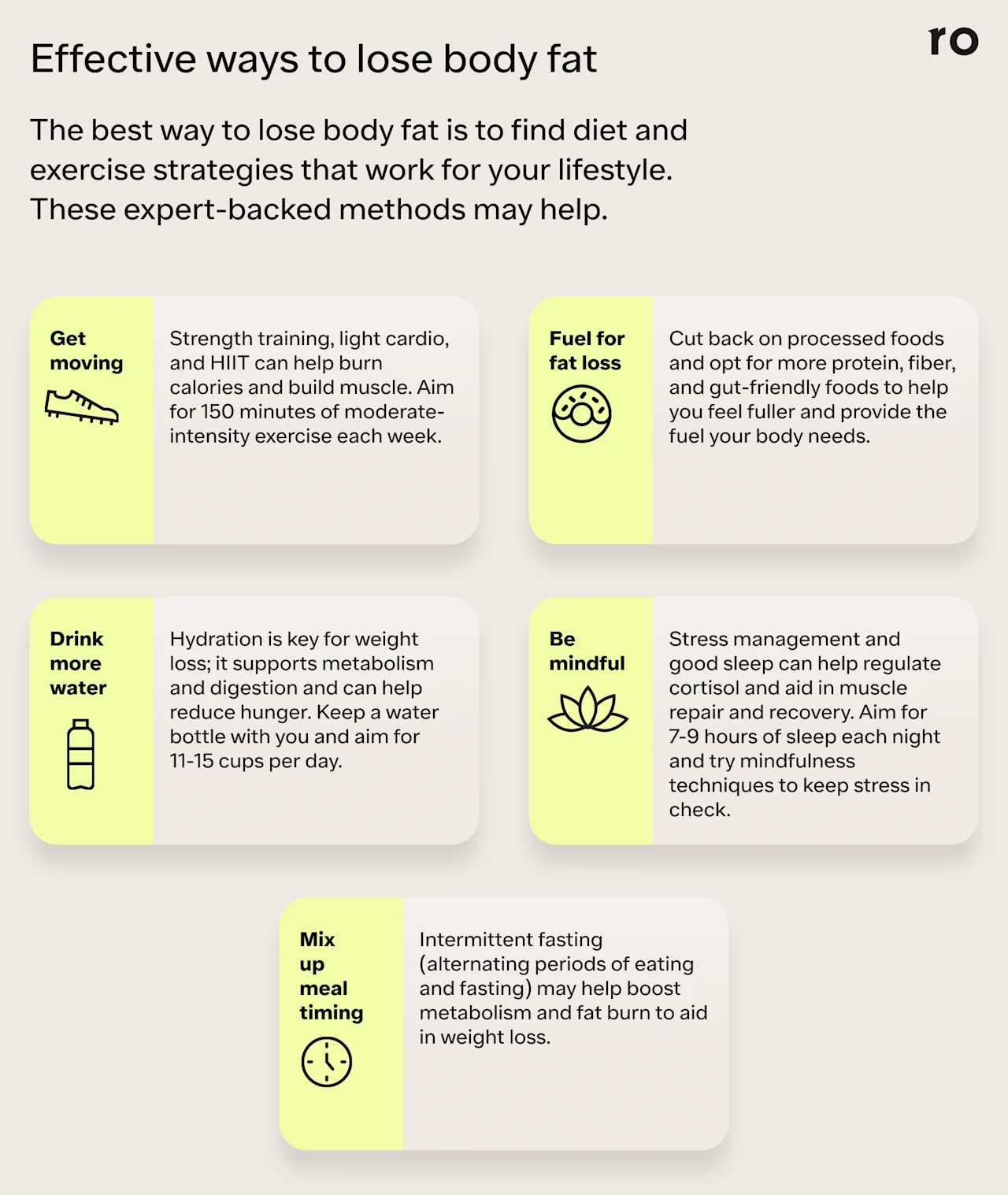
Bump up your protein intake
Protein is essential for any fat loss journey. It can help preserve muscle mass, boost metabolism, and keep you feeling full longer.
Some research suggests that 27-35% of your daily caloric intake should come from protein to promote weight loss, but each person’s needs will vary based on things like age, sex, activity level, and weight. You can use an online calculator (like this one from the US Department of Agriculture) to get a baseline estimate of how much protein you should eat each day.
“I always prioritize protein at each meal with a healthy serving of vegetables and fiber,” says clinical nutritionist Patricia M. Talerico, DC, MS.
Some great sources of protein include eggs, Greek yogurt, poultry (chicken and turkey), cottage cheese, and legumes like chickpeas.
Start strength training
A well-rounded fitness routine should include strength training to support fat loss goals. Strength training can help sculpt the body and increase resting metabolic rate by increasing muscle mass.
“While cardio often gets the limelight when it comes to weight loss, strength training is just as important,” McGrane says.
Muscle burns more calories at rest than fat, so strategies that help you build muscle can also boost calorie burn even when you're not exercising.
Compound exercises form the foundation of a good strength training workout. These moves are effective because they engage multiple muscle groups simultaneously, maximizing efficiency and increasing caloric expenditure. Some examples include:
Rows
Lunges
Pull-ups
Deadlifts
Bench Press
Overhead Press
These exercises can be modified to use free weights, resistance bands, or in some cases, your body weight (no gym required!).
Reduce processed foods and added sugar
Processed foods, sugary drinks, and snacks with minimal nutritional value can hinder fat loss.
“Diets high in added sugar have been shown to contribute to weight gain and increased body fat,” McGrane says. “Not only are high-sugar foods often high in calories and low in essential nutrients, but eating these foods regularly can lead to insulin resistance, high blood sugar levels, and leptin resistance, a hormone that affects appetite and fat storage.”
To support your fat loss goals, you may want to limit certain foods, such as:
Sugary drinks like soda, juice, energy drinks
Fast food, fried foods, sugary desserts
Processed foods like chips, cookies, and packaged meals
Eat in a (slight) calorie deficit
“We now know that losing weight isn’t as simple as consuming fewer calories than we burn,” McGrane says. “However, reducing your calorie intake is still essential if you want to lose weight.”
To get started, use a calorie calculator to estimate your daily needs based on your age, sex, weight, height, and activity level. From there, aim to reduce your daily calorie intake by 250-500 calories per day.
Creating a calorie deficit can help with fat loss, but it’s important to do it safely and sustainably. Start slow and gradually reduce daily calories, but pay attention to your body’s cues—if you feel like you’re starving or have low energy, you may need to shift your calorie targets so you’re consuming more each day.
Eating a variety of nutritious foods is crucial in a calorie deficit—this isn’t about a restrictive diet or cutting out entire food groups. To fuel your body and support fat loss, prioritize macronutrients like lean proteins, carbohydrates, and healthy fats, and stay hydrated by drinking plenty of water.
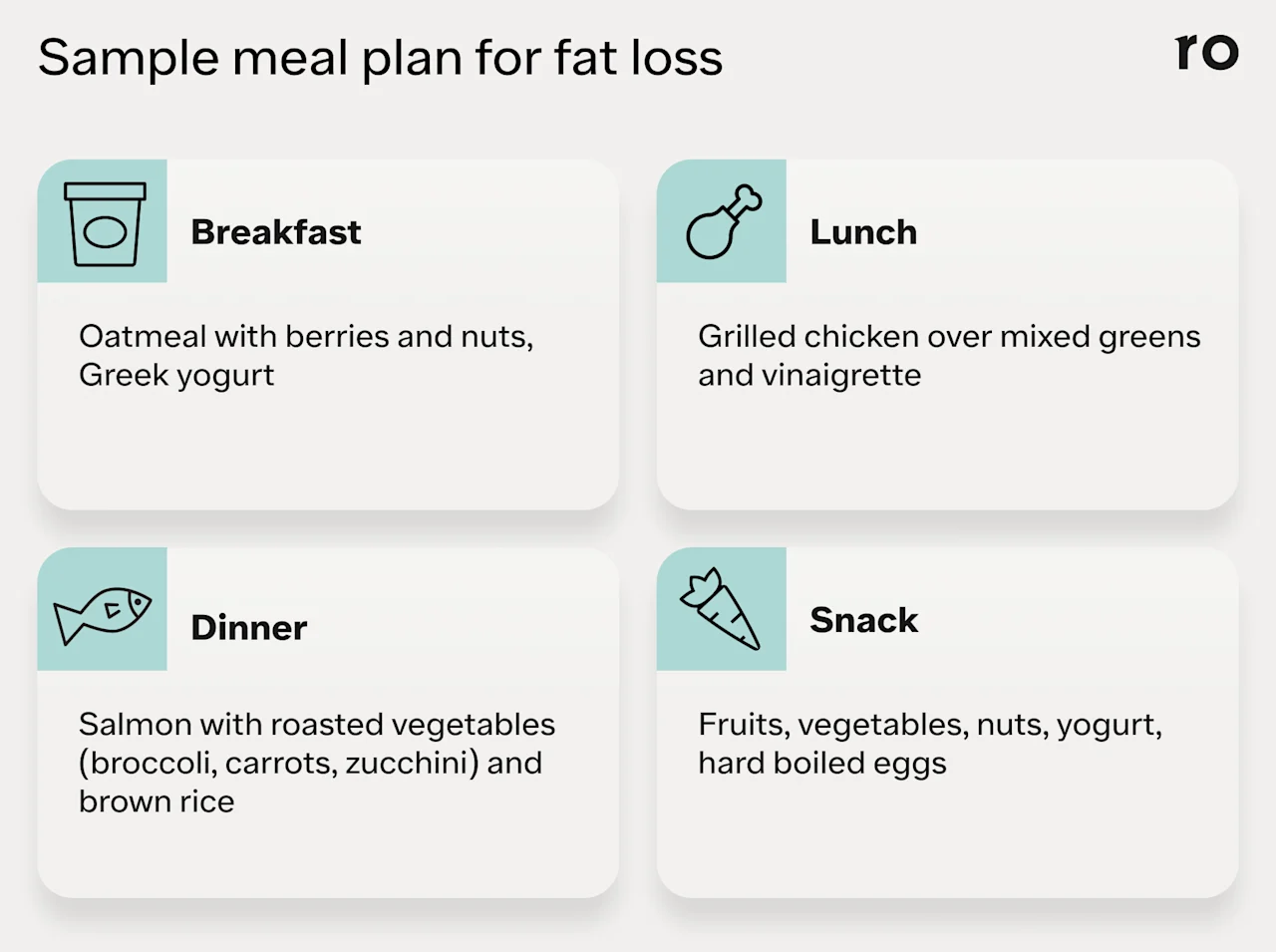
Add more fiber to your diet
When it comes to weight loss, fiber is your friend. Research shows fiber-rich foods support digestion, increase satiety, reduce inflammation, and contribute to weight management and fat loss.
Soluble fiber (a type of fiber that dissolves in water) may be particularly helpful for weight loss, as it can help slow digestion and increase feelings of fullness. Daily fiber intake varies, but aim for 25-38 grams daily.
Some good sources of soluble fiber include foods like:
Apples
Pears
Carrots
Beans
Sweet potatoes
Oats
Get your heart rate up with high-intensity interval training (HIIT)
High-intensity interval training (HIIT) is an efficient and effective fat-burning workout that alternates between intense, short bursts of exercise and brief rest periods, helping to burn more calories and boost metabolism.
Research also shows that HIIT is slightly more effective than steady-state cardio for enhancing fat breakdown and resting metabolic rate.
To do a HIIT workout at home, start by alternating 30 seconds of vigorous exercise (such as jumping jacks, burpees, or squats) with 30 seconds of rest. Cycle through a few different exercises to create a 15-20 minute circuit for an effective workout that you can do from home, even if you’re short on time.
Creating a Balanced Workout Plan Your workout plan should combine strength training and cardio for the best results. Here’s an example of a weekly routine:
Monday: Strength training (focus on upper body)
Tuesday: HIIT workout
Wednesday: Rest or active recovery (yoga, light cardio)
Thursday: Strength training (focus on lower body)
Friday: Cardio (steady-state cardio like jogging or cycling)
Saturday: Active recovery (a light swim or walk)
Sunday: Rest
PSA: Don’t overdo it—start small and gradually build your stamina.
Keep stress in check
Everyone experiences stress from time to time, but ongoing or unchecked stress can lead to health issues and may hinder your weight loss goals. Chronic stress also increases cortisol, a hormone that can promote fat storage, especially in the belly area. Try these tips to help manage stress effectively:
Take breaks from news and social media
Talk to trusted people about your feelings
Spend time outdoors and engage in relaxing activities
Make time to unwind with deep breathing, stretching, or meditation
Try intermittent fasting
Research shows intermittent fasting may help improve insulin sensitivity, increase fat burning, and support weight loss by reducing calorie intake. It can also help your metabolism by shifting it from storing fat and making lipids to burning fat and regulating blood sugar.
Intermittent fasting involves alternating periods of eating and fasting. There are many different methods, but one example is the 16/8 approach, where you eat during an eight-hour window and then fast for 16 hours.
This longer period of fasting overnight may help improve metabolism, which can aid in weight loss.
“[Fasting for 12 to 16 hours overnight] helps your body switch from burning sugar to burning fat, which can support weight management and metabolic health,” says Seun Sowemimo, MD, FACS, FASMBS, a bariatric surgeon and general surgeon at Endo Surgical Associates of Central Jersey.
While intermittent fasting can be effective for some people, it may lead to hunger, irritability, and difficulty focusing, especially during the adjustment period. This type of eating pattern may also not be appropriate or safe for everyone, including people who are pregnant or trying to get pregnant, people who are breastfeeding, and people with certain health conditions like diabetes.
It’s a good idea to consult with a healthcare provider before making any significant changes to your diet.
Drink more water
Staying hydrated is important for a variety of health functions, and the same is true when it comes to managing your weight. Water intake supports essential functions like metabolism, temperature regulation, and circulation.
Drinking water and other non-sweetened, hydrating beverages can also reduce hunger, boost metabolism, prevent overeating, improve digestion, and help your body absorb nutrients better.
The exact amount of water you need to stay hydrated varies based on things like your activity level, sex, age, and how much hydration you get from other foods and beverages. That said, the general recommendation is roughly 11-15 cups of fluid per day.
Boost gut health with probiotics
Gut health can also play a role in weight loss—or gain. Probiotics can help promote the growth of beneficial bacteria, which can support weight loss and improve digestion (among other potential health benefits). Good sources of probiotics include:
Kefir
Yogurt
Kimchi
Pickles
Tempeh
Kombucha
Sauerkraut
Prioritize good sleep
Sleep is crucial for muscle repair and recovery, among other health benefits. Not getting enough quality sleep has a variety of potential consequences—it can impact memory, make it hard to focus, and may even increase the risk for health conditions like high blood pressure and heart disease.
A chronic lack of sleep may also cause weight gain.
“While research is ongoing, studies show that poor sleep can slow your metabolism and lead to increased calorie consumption by heightening cravings,” McGrane says.
Some research suggests that poor sleep can disrupt meal timing, increase cravings for fast food and sugar, and reduce intake of fruits and vegetables.
Everyone’s sleep needs differ but aim for seven to nine hours each night. Some tips to help set yourself up for a good night of sleep might include:
Keeping a consistent bedtime
Reducing or eliminating screens (especially blue light) about an hour before bedtime
Focus on calming activities before bed, like reading, knitting, or taking a warm bath or shower
Find creative ways to get moving
You can still boost fat loss when you’re not working out. Non-exercise activity thermogenesis (NEAT) is the energy you burn from everyday activities, like walking, fidgeting, or even talking on the phone—not including sleep, eating, or formal workouts. Boosting your NEAT can play a role in managing weight.
Little changes that add more movement to your day may help you burn more calories and, over time, can have an impact on fat loss.
Some ways to stay active might include:
Taking the stairs over elevators whenever possible
Enjoying activities like dancing or gardening
Parking further from your destination to add extra steps
Using a standing desk or taking short walking breaks throughout the day
Cut back on alcohol
Alcohol is high in calories but doesn’t offer essential nutrients. Frequent heavy drinking can also disrupt hormonal balance by altering insulin sensitivity.
Alcohol also impacts sleep quality by shortening sleep duration, disrupting sleep patterns, and interfering with your body’s natural sleep-wake cycle. All of these factors can make it harder to fall—and stay—asleep.
Studies also show alcohol can interrupt your body’s fat-burning process. When alcohol enters your bloodstream, your liver focuses on metabolizing it instead of burning fat. This shift can cause your body to store more fat, especially around your belly.
Some practical tips for reducing alcohol consumption might include having a few alcohol-free days per week, switching out alcoholic drinks for sparkling water or other non-alcoholic alternatives, or limiting the number of drinks you have when you go out.
Steer clear of crash diets
Crash diets and other wellness fads may promise fast results, but they often don't work in the long run.
"As tempting as crash diets may seem, they rarely lead to sustainable weight loss—in fact, they often do the opposite," McGrane says.
When you cut calories drastically, your body shifts into energy-saving mode, slowing your metabolism. This makes it harder to continue losing weight and can cause rebound weight gain once you stop following a certain diet.
“A crash diet to me means someone is willing to do whatever it takes to lose a certain amount of weight in a short period,” Dr. Sowemimo says. “These diets often lead to disappointment, weight regain, and frustration. Some crash diets may also impact one’s health negatively.”
McGrane explains that potential health risks include nutrient deficiencies, hair loss, muscle loss, electrolyte imbalances, gallstones, dehydration, constipation, and weakness.
Find what works for your lifestyle
The best fitness or nutrition plan is the one that you can stick to—finding strategies that suit your lifestyle and preferences is essential for lasting weight loss. When creating your approach, think about your dietary needs, favorite foods, and fitness interests—this makes it easier to stay committed.
For instance, if running isn't your thing, try activities you love, like swimming, dancing, or hiking—whatever gets you moving and feeling good.
Debunking fat loss myths
Let’s take a quick look at some common misconceptions about fat loss—and what experts say about this so-called weight loss advice.
Myth: You can target fat loss in specific areas (spot reduction)
Fact: Spot reduction doesn’t work. Fat loss occurs across the body, not in specific areas. For example, the best way to lose belly fat is to focus on strategies that encourage overall fat loss. While exercises like crunches or leg lifts can help tone muscles, they won’t directly burn the fat covering those areas.
Myth: Drastically cutting calories is the fastest way to lose fat
Fact: While a slight calorie deficit can help promote weight loss, extreme calorie deficits can slow your metabolism and cause muscle loss, making it harder to lose weight and maintain long-term results.
Myth: Carbs increase body fat
Fact: Carbohydrates help provide energy to your body. While some low-carb diets may promote weight loss, cutting carbs entirely isn’t sustainable long-term. Focus on whole, unprocessed carbs—like starchy vegetables, beans, and whole grains—and enjoy them in moderation to keep your body fueled and healthy.
Myth: Dieting alone will lead to fat loss
Fact: A balanced diet is important for any health goal, but weight loss is a more complex process that involves looking at your whole lifestyle. "What you eat is just one piece of the weight loss equation," says McGrane. "Your hydration status, physical activity level, sleep habits, and stress levels also play a major role when it comes to maintaining a healthy weight."
Tips for maintaining fat loss
Maintaining your results is just as important as reaching your health goals. Talerico emphasizes that the key to sustaining your target weight is to continue following the exercise routine and a similar eating plan that helped you get there.
"This approach reduces the likelihood of backtracking and helps keep progress on track," she says.
McGrane adds that it’s important to find creative ways to stay motivated. Visualizing your success can keep you focused on your goals. Celebrate every victory—whether it's more energy, a better mood, or improved sleep, each milestone brings you closer to your overall success.
“Setting timely goals and rewarding yourself for reaching them can also help keep you moving forward in your efforts,” she says.
Here are some additional tips that may help with your weight loss journey:
Stay consistent. Keep up with your healthy habits even after you reach your goal. Consistency is the key to sustainable fat loss.
Monitor your progress beyond the scale. Regularly check in with your weight and body measurements, but also pay attention to how you feel. Improved energy levels, mood, and physical performance are all wins worth celebrating.
Find a support system. Surround yourself with friends, family, or a community that encourages you to stay on track and provides positive motivation when needed.
Stay active. Regular movement boosts both your mental and physical health. Mix things up to keep it fun and exciting.
Don’t be too hard on yourself. Life happens! If you experience setbacks with your routine, don’t get discouraged. Refocus and continue with your healthy habits. Small steps add up.
Adapting fat loss strategies as you age
As we age, metabolism slows down, hormonal shifts like menopause occur, and muscle mass decreases, which can reduce the overall calorie-burning activity of the body and make weight loss more challenging. A healthy diet and regular exercise can help boost metabolism, preserve muscle mass, and strengthen bones, no matter how old you are. Below are a few quick tips to help tailor your wellness approach to fit your age and personal needs.
Younger Adults (20s and 30s)
Prioritize strength training to boost metabolism
Add regular cardio and strength training into your routine
Eat a balanced diet of lean proteins, complex carbs, fruit, and vegetables
Middle-Aged Adults (40s and 50s)
Continue strength training to prevent muscle loss
Pay attention to portion sizes to avoid overeating
Reduce stress through techniques like meditation or yoga
Older Adults (60s and beyond)
Focus on protein, fiber, vitamins, and minerals
Consult a healthcare professional for a personalized health plan
Engage in regular physical activity, including light strength training and low-impact cardio to improve balance
When to seek professional support for weight loss
McGrane suggests talking to your healthcare provider or a registered dietitian before starting your fat loss journey—regular check-ups can help track progress, identify any health concerns, and adjust your plan accordingly. This is especially important if you have significant weight concerns or if conditions like obesity or overweight are impacting your day-to-day life and overall health.
Dr. Sowemimo also suggests seeking support if you have certain weight-related conditions like heart disease, high blood pressure, or sleep apnea. If you want to lose more than 50 pounds or have a BMI above 35, he recommends contacting an obesity medicine specialist who may be able to provide more personalized care.
Find out how much you could lose
Provide your biometric data to get started.

0.0
Your BMI
Underweight
< 18.5
Healthy weight
18.5 - 24.9
Overweight
24.9 - 29.9
Obesity
> 30
Treatments for weight loss: medications, surgery, and more
Sometimes, lifestyle changes such as diet, exercise, and stress management are not effective on their own. In those cases, medical interventions may be necessary to support weight management. These options include:
Prescription medications. GLP-1 medications like Wegovy, Saxenda, and Zepbound can help support significant weight loss by regulating appetite, increasing feelings of fullness, and reducing overall calorie intake.
Surgery. Bariatric procedures may be an option for those who have obesity and related health conditions if other weight loss interventions aren’t working.
Therapy. Talk therapy may help address psychological factors, such as emotional eating or body image issues, that contribute to weight challenges.
Hear from Ro patients
Ro members taking branded GLP-1 medications were paid for their testimonials.
Bottom line
Sustainable and effective fat loss isn’t about depriving yourself or going to extremes—it’s about making small, healthy choices that support your long-term health.
The best way to lose body fat involves a personalized approach that includes a balanced diet, regular exercise, and lifestyle changes like managing stress and getting adequate sleep.
Eating more protein and fiber, aiming for 150 minutes of cardio and strength training per week, intermittent fasting, and cutting back on alcohol, added sugars, and processed foods are all effective methods to help support fat loss.
For some people, diet, exercise, and other lifestyle modifications alone are not effective for weight loss. In those cases, other interventions or weight loss medication may be appropriate.
Frequently asked questions (FAQs)
How to drop body fat quickly?
Rapid weight loss is often unsustainable and can harm long-term health. A more effective approach is to focus on a balanced diet and regular exercise to support gradual weight loss. Most experts agree that a healthy weight loss target is 1–2 pounds per week.
What burns the most body fat?
Effective fat loss requires a combination of things, including what you eat and how much you exercise, as well as other lifestyle factors like sleep and stress management. Some research shows that foods high in protein and fiber, combined with exercises like strength training and HIIT, may be more effective at supporting fat loss.
How long does it take to lose 5% body fat?
Fat and weight loss results will vary from person to person. The amount of time it takes to lose body fat will depend on things like metabolism, body fat percentage, starting weight, diet, exercise, underlying health conditions, and more. Most health experts recommend a weight loss goal of 1-2 pounds per week, and at that pace, it could take several months to lose 5% of body fat.
What burns fat the fastest?
There is no one-size-fits-all solution for fat loss, but pairing muscle-building workouts like strength training and high-intensity interval training (HIIT) with a calorie-controlled diet may help accelerate fat burning.
What's the fastest way to lose belly fat?
The fastest way to lose belly fat is to combine a balanced diet, consistent physical activity, and gradual caloric reduction. Focus on strength training exercises to build muscle and boost metabolism, and add more fiber and lean protein diet to help fuel your body and reduce hunger cravings.
DISCLAIMER
If you have any medical questions or concerns, please talk to your healthcare provider. The articles on Health Guide are underpinned by peer-reviewed research and information drawn from medical societies and governmental agencies. However, they are not a substitute for professional medical advice, diagnosis, or treatment.
Wegovy Important Safety Information: Read more about serious warnings and safety info.
Saxenda Important Safety Information: Read more about serious warnings and safety info.
Zepbound Important Safety Information: Read more about serious warnings and safety info.
References
Akbar, A. & Shreenath, A. P. (2023). High Fiber Diet. StatPearls. Retrieved from https://www.ncbi.nlm.nih.gov/sites/books/NBK559033/
Atakan, M. M., Guzel, Y., Shrestha, N., et al. (2022). Effects of high-intensity interval training (HIIT) and sprint interval training (SIT) on fat oxidation during exercise: a systematic review and meta-analysis. British Journal of Sports Medicine, 56(17), 988-996. doi: 10.1136/bjsports-2021-105181. Retrieved from https://bjsm.bmj.com/content/56/17/988.info
Atakan, M. M., Li, Y., Koşar, Ş. N., et al. (2021). Evidence-based effects of high-intensity interval training on exercise capacity and health: A review with historical perspective. International Journal of Environmental Research and Public Health, 18(13), 7201. doi: 10.3390/ijerph18137201. Retrieved from https://pmc.ncbi.nlm.nih.gov/articles/PMC8294064/
Bonilla, D. A., Peralta-Alzate, J. O., Bonilla-Henao, J. A., et al. (2023). Insights into Non-Exercise Physical Activity on Control of Body Mass: A Review with Practical Recommendations. Journal of Functional Morphology and Kinesiology, 8(2), 44. doi: 10.3390/jfmk8020044. Retrieved from https://pmc.ncbi.nlm.nih.gov/articles/PMC10123606/
Bozzetto, L., Costabile, G., Della Pepa, G., et al. (2018). Dietary fibre as a unifying remedy for the whole spectrum of obesity-associated cardiovascular risk. Nutrients, 10(7), 943. doi: 10.3390/nu10070943. Retrieved from https://pmc.ncbi.nlm.nih.gov/articles/PMC6073249/
Chen, Q.-Y., Khil, J., & Keum, N. (2024). Water intake and adiposity outcomes among overweight and obese individuals: A systematic review and meta-analysis of randomized controlled trials. Nutrients, 16(7), 963. doi: 10.3390/nu16070963. Retrieved from https://pmc.ncbi.nlm.nih.gov/articles/PMC11013432/
Dhandevi, P. E. M. & Jeewon, R. (2015). Fruit and vegetable intake: Benefits and progress of nutrition education interventions—Narrative review article. Nutrition Research and Practice, 44(10), 1309–1321. doi: 10.4162/nrp.2015.44.10.1309. Retrieved from https://pmc.ncbi.nlm.nih.gov/articles/PMC4644575/
Farhana, A. & Rehman, A. (2023). Metabolic consequences of weight reduction. StatPearls. Retrieved from https://www.ncbi.nlm.nih.gov/books/NBK572145/
Leaf, A. & Antonio, J. (2017). The effects of overfeeding on body composition: The role of macronutrient composition – A narrative review. Nutrients, 10(8), 1275–1296. doi: 10.3390/nu10081275. Retrieved from https://pmc.ncbi.nlm.nih.gov/articles/PMC5786199/
MacKenzie-Shalders, K., Kelly, J. T., So, D., et al. (2020). The effect of exercise interventions on resting metabolic rate: A systematic review and meta-analysis. Journal of Sports Sciences, 38(14), 1635–1649. doi: 10.1080/02640414.2020.1754716. Retrieved from https://pubmed.ncbi.nlm.nih.gov/32397898/
Moon, J. & Koh, G. (2020). Clinical Evidence and Mechanisms of High-Protein Diet-Induced Weight Loss. Journal of Obesity & Metabolic Syndrome, 29(3), 166–173. doi: 10.7570/jomes20028. Retrieved from https://pmc.ncbi.nlm.nih.gov/articles/PMC7539343/
National Health Service (NHS). (2023). Water, drinks and hydration. Retrieved from https://www.nhs.uk/live-well/eat-well/food-guidelines-and-food-labels/water-drinks-nutrition/
Oh, R., Gilani, B., & Uppaluri, K. R. (2023). Low-Carbohydrate Diet. StatPearls. Retrieved from https://www.ncbi.nlm.nih.gov/books/NBK537084/
Palmer, A. K. & Jensen, M. D. (2022). Metabolic changes in aging humans: Current evidence and therapeutic strategies. The Journal of Clinical Investigation, 132(16), e158451. doi: 10.1172/JCI158451. Retrieved from https://pmc.ncbi.nlm.nih.gov/articles/PMC9374375/
Papatriantafyllou, E., Efthymiou, D., Zoumbaneas, E., et al. (2022). Sleep Deprivation: Effects on Weight Loss and Weight Loss Maintenance. Nutrients, 14(8), 1549. doi: 10.3390/nu14081549. Retrieved from https://pmc.ncbi.nlm.nih.gov/articles/PMC9031614/
Rachdaoui, N. & Sarkar, D. K. (2017). Pathophysiology of the effects of alcohol abuse on the endocrine system. Alcohol Research, 38(2), 255–276. Retrieved from https://pmc.ncbi.nlm.nih.gov/articles/PMC5513689/
Traversy, G. & Chaput, J.P. (2015). Alcohol consumption and obesity: An update. Current Diabetes Reviews, 4(1), 122–130. doi: 10.1007/s13679-014-0129-4. Retrieved from https://pmc.ncbi.nlm.nih.gov/articles/PMC4338356/
U.S. Department of Agriculture (USDA). (2020). Dietary guidelines for Americans 2020-2025. Retrieved from https://www.dietaryguidelines.gov/sites/default/files/2020-12/Dietary_Guidelines_for_Americans_2020-2025.pdf
Vasim, I., Majeed, C. N., & DeBoer, M. D. (2022). Intermittent fasting and metabolic health. Nutrients, 14(3), 631. doi: 10.3390/nu14030631. Retrieved from https://pmc.ncbi.nlm.nih.gov/articles/PMC8839325/
Weiler, M., Hertzler, S. R., & Dvoretskiy, S. (2023). Is it time to reconsider the U.S. recommendations for dietary protein and amino acid intake? Nutrients, 15(4), 838. doi: 10.3390/nu15040838. Retrieved from https://pmc.ncbi.nlm.nih.gov/articles/PMC9963165/


